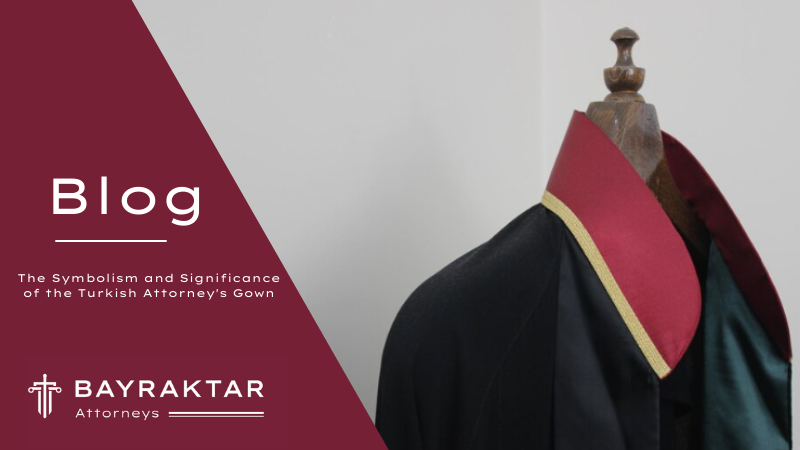
The Role of the Gown in the Turkish Legal System
In Turkey, the gown, or cübbesi, is not merely a uniform; it’s a symbol that reflects the role and the values inherent to the legal profession.
In the courtrooms of Turkey, attorneys, judges, and prosecutors each wear distinct gowns, symbolizing justice, independence, and equality under the law.
This attire is essential to the courtroom experience and reinforces the sense of duty to justice that each role represents.
The gown’s colors, lack of fastenings, and even the absence of pockets carry specific meanings, emphasizing the ethical responsibilities carried by those who wear it.
History of the Legal Gown
The tradition of wearing gowns by legal professionals dates back centuries, with its roots in the Ottoman period and influenced by European legal systems.
In modern Turkey, the gown symbolizes the continuity of this tradition while embodying principles that the legal profession upholds in a democratic society.
The uniform was institutionalized to denote a shared respect for justice, impartiality, and a reminder of the solemnity of the courtroom.
The Design and Color of the Turkish Attorney’s Gown
The Turkish attorney’s gown is black, a color that has deep symbolic meaning. Black represents dignity, seriousness, and neutrality, aligning with the idea that justice should be impartial.
- No Buttons: Turkish legal gowns, regardless of whether they are worn by judges, prosecutors, or attorneys, are designed without buttons. This detail holds substantial meaning; it signifies that those in the legal profession should remain free from external influences. This design choice emphasizes that legal practitioners are independent and not subordinate to any other authority in their duty to uphold the law.
- Absence of Pockets: The absence of pockets is a critical feature of the gown, representing the ideal that justice is incorruptible and that legal practitioners should not be tempted by material gain. The pocket-less design serves as a reminder that the attorney’s or judge’s role is a public service and not a means for personal profit.
- Green Lining for Attorneys: While the basic color of the gown is black, each role has specific colors on the inner lining of the collar. The attorney’s gown features a green lining, symbolizing hope, renewal, and growth, which aligns with the role of attorneys in advocating for clients’ rights, seeking fair resolutions, and promoting justice.
- Red and Purple Linings for Judges and Prosecutors: Judges wear gowns with purple linings, symbolizing authority and wisdom, while prosecutors’ gowns are lined in red, a color associated with determination and courage. These color choices visually distinguish the roles within the courtroom and reflect the specific responsibilities of each position.
The Attorney’s Gown as a Mark of Professional Identity
For attorneys, the gown signifies membership in a unique profession, one that requires adherence to ethical standards and a commitment to justice.
Wearing the gown is a matter of professional pride, representing the seriousness of the attorney’s role as a defender of rights and as an intermediary between the individual and the legal system.
The gown also serves as a powerful reminder of an attorney’s duty to maintain the highest ethical standards. It underscores the notion that attorneys must act with integrity, avoiding conflicts of interest, upholding client confidentiality, and maintaining professionalism in their interactions within the judicial system.
The gown thereby becomes a visual and psychological marker, separating the personal identity of the attorney from their role as a neutral and ethical advocate within the court.
Practical and Symbolic Importance of the Gown in Courtrooms
Wearing the gown inside the courtroom is mandatory for Turkish attorneys and reinforces the solemnity of court proceedings. When attorneys wear the gown, they visibly step into their role as advocates, and the gown serves as a signal to the court and the public of the attorney’s dedication to justice.
It establishes a sense of equality, ensuring that attorneys are recognized based on their arguments, professionalism, and expertise, rather than their appearance or attire.
How the Gown Reflects the Values of the Turkish Legal System
The design of the gown embodies values central to the Turkish legal system, such as justice, equality, and independence. It is intended to remind both legal practitioners and the public that the court is a place where each individual stands equally before the law, without regard to status or wealth.
The neutral design of the gown eliminates personal biases, encouraging attorneys, judges, and prosecutors to focus solely on the merits of the case.
- Symbol of Independence: The button-less and pocket-less design is a powerful reminder of the independence that judges, attorneys, and prosecutors must maintain. It illustrates that the judicial process is not influenced by external pressures or financial interests, but solely dedicated to achieving fair and just outcomes.
- A Reminder of Ethical Standards: Attorneys, like other members of the judiciary, are bound by strict ethical standards, and the gown is a visible affirmation of these standards. Its uniformity reinforces the idea that attorneys are united in their ethical obligations to clients and to the law itself.
- An Emblem of Public Trust: The gown serves as a visual emblem of the public trust placed in attorneys and legal professionals. It emphasizes that those who wear it are held to a high standard of conduct and are committed to preserving the integrity of the legal system.
Final Thoughts
The Turkish attorney’s gown is more than a garment—it’s a symbol of the responsibilities and ideals embodied by those who serve in the legal profession.
Its design, color, and features are carefully chosen to reflect values that are central to the Turkish judicial system, including impartiality, ethical integrity, and dedication to public service.
Each time an attorney dons the gown, they carry forward a legacy of respect for justice, and it is this shared legacy that binds members of the legal community in their commitment to the fair and equitable application of the law.
In conclusion, the Turkish attorney’s gown is a profound emblem of the values that underlie the practice of law in Turkey.
It is a representation of the honor, duty, and trust bestowed upon those who wear it, a solemn reminder of their commitment to justice, and a uniform that unites attorneys, judges, and prosecutors in their shared mission of serving the legal system with integrity and independence.

![["A close-up view of a document titled “Borç Sözleşmesi” on a desk during a legal consultation scene in Türkiye."]](https://admin.bayraktarattys.com/api/admin/images/images/projects/cba6db89-fedb-48ba-a6b9-6a2cd64c9b05_a-photograph-captures-a-close-up-view-of-a-document-titled-borc-sozlesmesi.jpg)
![["A man and a woman seated across from each other in a professional legal consultation setting, symbolizing a marriage annulment case in Türkiye."]](https://admin.bayraktarattys.com/api/admin/images/images/projects/282fca82-2b2d-4985-a767-19bb6c67f616_cancellation-of-marriage-in-turkey.jpg)


![["Foreign resident in Türkiye managing investments in Turkish and U.S. stock markets Ask ChatGPT"]](https://admin.bayraktarattys.com/api/admin/images/images/projects/896ee889-22cf-46f0-b614-930eacd9e0eb_tax-on-foreign-and-turkish-stocks-for-foreigners-in-turkey.jpg)
![["A photograph depicts a professional meeting in a law office, symbolizing a legal consultation about joint property dissolution in Türkiye."]](https://admin.bayraktarattys.com/api/admin/images/images/projects/fffb8978-7461-4027-801d-74ce71ce417a_dissolution-of-joint-ownership-in-turkey.jpg)
